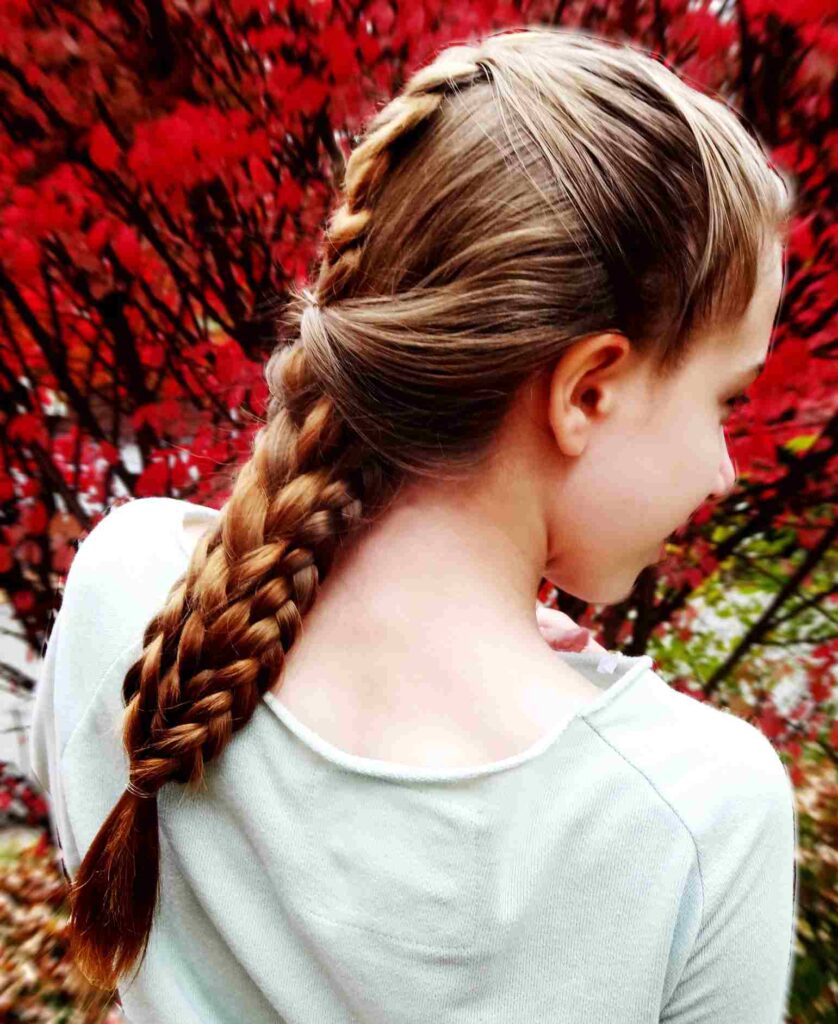Braided hairstyles have always been popular, whether you need a quick solution to keep your hair out of your face on a busy day or a dazzling appearance for a night out. Anyone can wear a braid if they have an appropriate look. There is a braid out there for everyone, from five-year-olds to sixty-year-olds, college athletes to wedding attendees.
French braids are one of the few hairstyles that have remained fashionable. The French braid’s precise ancestry is a touchy subject despite a name based on a particular region. Some contend that it dates back approximately 6,000 years to North Africa, where ladies sporting the hairstyle are depicted in cave paintings. Some believe it may have started during China’s 960–1279 Song Dynasty. All of this suggests that this is a durable plait style. There is a braided hairstyle that suits everyone, whether you are five or fifty-five.
The French Braiding Method
Besides a straightforward three-strand braid, a French braid could be the most well-known plait. A French braid takes the primary braiding method one step further by starting near your head’s crown rather than the neck’s nape. You initially add more hair from that side before crossing a side strand across the primary strand.
It always follows the same pattern: cross the left strand over the middle strand, then cross the right strand over the center thread, and so on. When you get to the nape of the neck, you continue in this pattern and end with a standard braid.
Is it challenging to do French braids?
French braids are considerably simpler to master because they use the same method as a standard three-strand braid with the addition of smaller parts from the sides. You will be wearing a French braid in no time with a little bit of effort and patience.
Using the Dutch Braid Method
The sole distinction between a Dutch braid and a French braid is that the side sections of hair are crossed each time underneath the central strand rather than over it. Because the braid is visible on top of the style, it appears more three-dimensional. As a result, it is frequently referred to as an “inside-out braid” or a “reverse French braid.”
You’ll begin like a French braid closer to the crown of the head, add additional hair to each strand, and then cross it numerous times across the middle. Some people characterize the final appearance as more pronounced than its French equivalent.
Read More: 7 Best Men’s Fashion Startups Brands You Need To Know
Main Differences Between Dutch Vs. French Braid
The best way to think of the Dutch braid is as a modified or inverted French braid, similar to how those nations’ flags are braided. The French weave it on top, while the Dutch weave it on the bottom, which is the sole technical difference. The other will be simple to create once you master the first.
Both are easy. You can make your hair and the hair of others appear lovely and magnificent with some experience. Please feel free to finish the French and Dutch versions, but don’t forget to double any necessary accessories and, most importantly, add some lengthening extensions. Enjoy discovering your ideal appearance.
A Dutch braid and a French braid are very similar but differ in critical ways. The following are the primary variations between the Dutch and French braids:
- The strands’ intersection. In contrast to Dutch braids, which include crossing the strands under, French braids involve crossing the strands over. The “inside-out look” that this method creates is why a Dutch braid is occasionally referred to as a reverse French braid.
- The braids’ total volume. Compared to French braids, which are often tighter, Dutch braids have greater importance (unless intentionally teased).
- The braiding technique. The Dutch braid leans more toward the stylish side and has a lot more current appearance than the French braid.
Tips for styling braids
You may be creative now that you understand how to distinguish between and make each braid. Your decision to lay or leave your edges natural will depend on the nature of your hair. Sims states, “accessorizing your braids with pearls, flowers, or jewelry can freshen [the] look.” While one loose French braid might look simple, other women choose to wear two braids.
And after all your effort, remember to safeguard the hair. Sims advises avoiding friction against your braids by not wearing headwear or managing your hair roughly to prevent frizz from maintaining the hairdo.
French and Dutch braids are similar to each other
These braid varieties have several characteristics and a few essential variances between them. These consist of the following:
- The setting Pigtails start at the neck, but French and Dutch braids start at the crown of the head.
- The fabric. These braiding techniques gather hair from the opposite side before crossing it under or over to finish the braid.
- The adaptability. These braids can be styled in various ways, including buns or ponytails, half-updos, and with or without hair accessories. Additionally, a short hair elastic will work to hold it in place.

